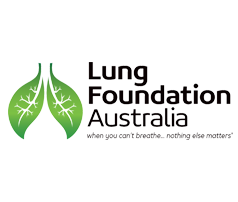Bronchiectasis among Australian Aboriginal and non-Aboriginal patients in the regional and remote population of the Northern Territory of Australia
Purpose: Chronic respiratory disorders are highly prevalent among Australian Aboriginal people living in the Top End Health Service region, Northern Territory of Australia. Bronchiectasis is a heterogenous disease that features among these chronic respiratory conditions in this population. However, there are sparse comparative data between Aboriginal and non-Aboriginal patients with bronchiectasis from this region.
Methods: In this retrospective study, we compared the demographics, clinical characteristics and relevant laboratory parameters among adult Aboriginal and non-Aboriginal patients diagnosed with bronchiectasis between 2012 and 2017.
Results: A total of 388 adults had radiology-confirmed bronchiectasis and 258 (66%) were Australian Aboriginals. Compared to non-Aboriginal patients, Aboriginal patients were significantly younger (mean age 54 vs 67 years), majority lived in rural and remote communities (80% vs 9 %), had higher rates of self-reported smoking (52% vs 19%), alcohol consumption (29% vs 12%) and co-occurrence of chronic obstructive pulmonary disease (65% vs 38%) and other chronic co-morbidities. Sputum microbiology was also different between the groups with <i>Haemophilus influenzae</i>, <i>Streptococcus pneumoniae</i>, and <i>Moraxella catarrhalis</i> being more common in Aboriginal patients whilst, <i>Pseudomonas aeruginosa</i>, <i>Aspergillus</i> species, non-tuberculous mycobacteria were higher in the non-Aboriginals. Further, Aboriginal patients had poorer lung function compared to non-Aboriginal patients (FEV1% predicted 33% vs 53%, FVC% predicted 49% vs 60% respectively), higher exacerbation rates (29% vs 18%) and had poorer overall outcomes (age at death 60 vs 76 years).
Conclusion: Within a single health service, Aboriginal patients with bronchiectasis have significantly poorer outcomes with differing manifestations and higher comorbidities than non-Aboriginal patients. This warrants further studies to identify feasible interventions to reduce this inequity
Rural and Remote Health Journal, Sumti Mehra et al March 2021








